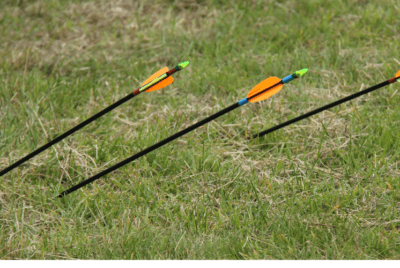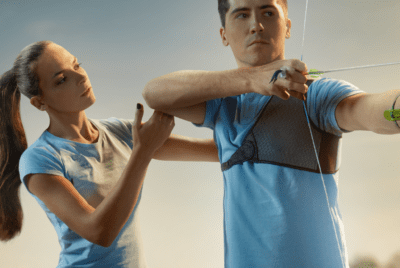How to Adjust Compound Bow Draw Length: A Complete Guide
Introduction
Mastering the art of archery hinges on precision, and achieving the ideal draw length is a pivotal step. In this guide, we’ll delve into the intricacies of how to adjust compound bow draw length for enhanced comfort and accuracy. Let’s embark on this journey towards archery excellence.
Importance of Proper Draw Length
Comfort and Control
A correctly adjusted draw length is fundamental to comfortable and controlled shooting. It minimizes strain on your body, allowing for steady aim and smooth release. This leads to a more enjoyable and productive archery experience. Moreover, a comfortable draw length empowers you to focus on your form and target, rather than struggling with an ill-fitting bow.
Furthermore, a precise draw length significantly contributes to accuracy. When your draw length is correctly set, your anchor points align naturally, resulting in more consistent shots. This means tighter groupings and increased confidence in your shooting abilities.
How to Measure Your Draw Length
The ‘T’ Measurement Method
To begin, you’ll need a friend, a measuring tape, and a bit of patience. Stand upright with your arms extended to the sides, forming a ‘T’ shape. Have your friend measure the distance between the tips of your middle fingers. This measurement is your draw length. It’s worth noting that accurate measurement is a cornerstone of this process. Even a small discrepancy can lead to significant discomfort and reduced accuracy.
Remember, your draw length may evolve over time due to changes in your physique or shooting style. Therefore, it’s advisable to recheck your draw length periodically, especially if you’ve recently experienced growth spurts or made adjustments to your shooting form.
Factors Affecting Draw Length
Body Size and Shape
Your physical attributes play a significant role in determining your ideal draw length. Taller archers may naturally have longer draw lengths, while those with more compact physiques may have shorter ones. However, it’s crucial to remember that individual variation exists. Two archers of the same height may have slightly different draw lengths based on their unique body proportions.
To fine-tune your draw length based on your physique, consider consulting an experienced archery technician. They can provide expert guidance and may recommend specialized equipment or accessories tailored to your body type.
Shooting Style
Consider your shooting style. Target shooters may benefit from a slightly longer draw length for precision, while hunters may prefer a shorter draw length for quick, stealthy shots. Additionally, take into account any specialized techniques or preferences you employ in your archery practice. These may influence your draw length requirements.
Experimentation is key in finding the optimal draw length for your shooting style. Spend time at the range trying different draw lengths and pay attention to the results. It’s a process of discovery that can lead to significant improvements in your shooting performance.
Purpose of Use
The purpose of your bow also influences draw length. For instance, a bow used primarily for hunting may have a different ideal draw length than one used for competitive target shooting. Understanding the specific demands of your archery pursuits is crucial in determining the most suitable draw length for your bow.
If you engage in multiple styles of archery, consider having separate bows with tailored draw lengths for each discipline. This ensures you’re always equipped with the optimal setup for your chosen activity.
Steps to Adjust Draw Length
Using a Bow Press
For those with access to a bow press, precision in adjusting draw length is at your fingertips.
- Secure the Bow: Begin by securing your bow in the press and carefully release tension on the strings. This step is critical for your safety and the integrity of your bow.
- Locate the Draw Length Module: Find the draw length module, usually located at the cams. Familiarize yourself with the specific mechanism of your bow, as designs may vary.
- Make the Adjustments: Depending on your bow’s make and model, you may need to replace the module or adjust its settings. Follow the manufacturer’s instructions closely. This may involve switching out cams or rotating modules to the desired setting.
- Re-tension the Strings: Once the adjustments are made, re-tension the strings and ensure everything is aligned. Take care to maintain even tension across all strings for balanced performance.
- Test the New Draw Length: Test your draw length to confirm the changes feel comfortable and accurate. Spend some time at the range, focusing on form and consistency. Pay attention to any residual discomfort or strain.
Without a Bow Press
No bow press? No problem. You can still make effective adjustments.
- Consult the Manual: Start by consulting your bow’s manual or the manufacturer’s website for guidance on adjusting draw length without a press. Many manufacturers provide detailed instructions specific to their models.
- Make the Adjustments: In many cases, this involves swapping out draw length modules or cams. Use the appropriate tools and exercise caution. Pay close attention to alignment and ensure all components fit snugly.
- Inspect the Bow: Once the adjustments are made, carefully inspect the bow to ensure everything is securely in place. Look for any signs of wear, particularly around the draw length components.
Testing and Fine-tuning
After making adjustments, it’s crucial to test your new draw length. Head to the range and spend some time shooting targets at various distances. Pay close attention to how comfortable the draw feels and how accurate your shots are. If you notice any discomfort or inconsistency, don’t hesitate to make further adjustments. Remember, finding the perfect draw length is a process of trial and error.
Tips for Maintaining Draw Length
Maintaining the correct draw length is essential for consistent performance. Regularly check the draw length settings to ensure they haven’t shifted. Additionally, keep an eye on any wear and tear on the draw length modules or cams. If you notice any issues, address them promptly to prevent any adverse effects on your shooting. Consider scheduling regular maintenance checks with a qualified archery technician to catch any potential issues early.
Common Mistakes to Avoid
In the process of adjusting draw length, there are common pitfalls to be aware of.
- Inaccurate Measurement: Neglecting to measure your draw length accurately is a fundamental mistake. Ensure you follow the measurement method correctly. Even a slight misalignment during measurement can lead to significant discrepancies.
- Drastic Changes: Avoid making drastic changes all at once. Gradual adjustments allow your body to adapt comfortably to the new draw length. Sudden, extreme changes can lead to discomfort and a breakdown in shooting form.
Additional Insights for Fine-tuning Draw Length
As you progress in your archery journey, you may discover subtle nuances in your shooting that can be addressed through further draw length adjustments. Consider the following:
Fine-tuning for Specialty Shots
If you engage in specialized archery styles, such as 3D target shooting or bowhunting from a tree stand, it’s worth experimenting with slight variations in draw length to accommodate these scenarios. A slightly shorter draw length for tight quarters or a slightly longer draw length for added power may be advantageous.
Listening to Your Body
Pay attention to any physical discomfort or strain during extended practice sessions. These subtle cues can indicate that your draw length may need a minor adjustment. Trust your instincts and don’t hesitate to make small alterations to enhance your comfort and performance.
Consulting Experienced Archers
Engaging with experienced archers or seeking advice from archery forums and communities can provide valuable insights. Other archers may have encountered similar challenges and can offer personalized recommendations based on their own experiences.
Recording and Analyzing Your Shots
Keep a record of your practice sessions, noting how different draw lengths impact your accuracy and comfort. Analyzing these records over time can reveal patterns and guide you toward the most effective draw length for your unique shooting style.
Conclusion
In the world of archery, precision is paramount. Achieving the perfect draw length is a dynamic process that evolves with your experience, physique, and shooting style. By understanding the factors at play and following the steps outlined in this guide, you’re embarking on a journey toward archery excellence. Embrace the art of fine-tuning, and watch as your shots become more accurate, comfortable, and ultimately, more rewarding.
Remember, every archer is unique. What works best for you may differ from others, and that’s perfectly normal. Trust your instincts, seek advice when needed, and enjoy the process of refining your draw length to perfection.
FAQs
How do I know if my draw length is too long or too short?
An overly long draw length can lead to overextension and strain, while a draw length that’s too short may result in cramped shooting posture and reduced power. Pay attention to any discomfort or awkwardness during your draw, and adjust accordingly.
Can draw length adjustments affect my overall bow setup?
Yes, changes in draw length may impact factors like arrow speed, kinetic energy, and overall bow performance. It’s advisable to consult with an experienced archery technician if you’re considering significant adjustments to ensure your bow remains balanced and optimized.
Should I consider professional tuning after adjusting draw length?
Absolutely. After making substantial draw length changes, it’s recommended to seek professional tuning to ensure all components of your bow work harmoniously. This includes checking string tension, cam synchronization, and arrow rest alignment.
Are there any exercises to improve my draw length and shooting form?
Engaging in specific strength and flexibility exercises can enhance your archery performance. Consult a fitness professional or an archery coach for a tailored exercise routine that targets the muscles and flexibility needed for a smooth draw and release.
Can I revert to my previous draw length if I’m not satisfied with the adjustments?
Yes, you can always return to your previous draw length if the adjustments don’t yield the desired results. Remember, it’s a journey of exploration, and finding the perfect draw length may take some trial and error.





